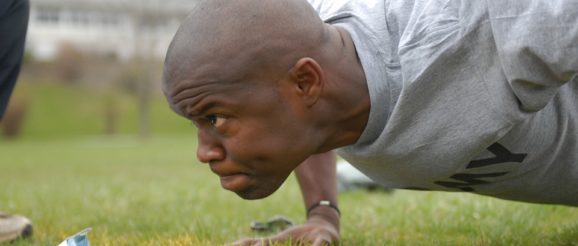Harvard Study Reveals One Exercise That Predicts 96% Lower Cardiovascular Risk – Innovation Excellence

In less that 10 minutes you can gauge your risk of a heart disease or a cardiac event by doing this exercise.
Cardiovascular diseases ranks as the number cause of death worldwide. And while it’s well known that even moderate exercise can significantly lower cardiovascular risk, diagnosing that risk has often involved numerous expensive clinical tests. I’ve written in the past about exercises that can predict longevity, but never ones that come out of a thoroughly researched study.
So, what if there was one simple test that you could do anywhere, even right now, that would predict your risk?
Well, according to a study sponsored by the National Institute for Occupational Safety and Health and peer reviewed by researchers at the Harvard T.H. Chan School of Public Health, there is an amazingly accurate marker that can predict a 96% lower risk of a cardiovascular disease event (CDV).
The recently published study shows that men who were “able to complete more than 40 consecutive push-ups had a 96% reduction in the incident of CVD events compared with those completing fewer than 10 push-ups.
Pushups have always been one of my go to exercises. They give me an amazingly accurate read of just how in shape I am. I’ve been doing them since I was a kid and it never fails that the number of pushups I can do is directly related to how good I feel overall, my level of conditioning, and my ability to do virtually any other exercise.
I’ll even go so far as to say that my state of mind and emotional well-being are just as tightly linked to how many pushups I can do. Knowing I’m able to keep cranking out more pushups as I get older simply gives me a sense of satisfaction and accomplishment that cascades into everything else I’m doing.
Nowhere is that more obvious than my ability to have clarity and focus on the job. That’s especially true when job pressure is stressful. In, fact one of the criteria for the study was to use gainfully employed males. And these men all had the especially stressful job of being first responders. The authors even point to this as a factor worth further consideration in future studies. If you think the connection is a bit strained I’d ask you to try an experiment and knock out a few pushups in your office as a break during times when you feel stressed, are making a tough decision, or before an important meeting. There’s an unavoidably critical connection between our sense of physical well being and our mental well being.
While I always regarded push-ups as a benchmark for my physical and mental health, I had never considered that they were also so closely related to my overall risk factor for cardiovascular disease.
As with any study of this sort the authors point out that what they identified was a statistical correlation and not a cause and effect. In other words don’t go popping a shoulder socket by cranking out 41 pushups just so that you can rationalize downing a Supersized Whopper meal.
Pushups are only one indicator of what’s going on with your cardiovascular system and your overall health. Still, they are a very good statistical indicator.
In fact, according to the study, even being able to “perform 11 or more push-ups at baseline had significantly reduced risk of subsequent CVD events.”
Unfortunately the study was conducted on a group of male firefighters and did not include women. In addition, these were individuals who were all relatively active and employed. Which means that being a couch potato all day and then straining to do 11 pushups likely doesn’t mean much (and I’m being generous using the word “likely” in the last sentence).
None the less, this is good news if you are reasonably active and able to do more than 11 consecutive pushups your CDV risk is already lower than men who can’t. If you do work out regularly, aren’t sedentary, and can knock of 40+ consecutive pushups then it’s great news when it comes to your cardiovascular risk.
Note that these are pushups that are done consecutively. According to the study, participants had to do the pushups “in time with a metronome set at 80 beats per minute. Clinic staff counted the number of push-ups completed until the participant reached 80, missed 3 or more beats of the metronome, or stopped owing to exhaustion or other symptoms (dizziness, lightheadedness, chest pain, or shortness of breath).” That means you need to be able to complete all 41 pushups in just over 60 seconds.
We shouldn’t be all that surprised. These findings are consistent with what we’ve all known for some time, being physically fit has irrefutable benefits to long-term health and longevity.
So, if you’re a male between the ages of 21-66, you know what to do now, right?
That’s right. Drop and give me 41!
And, of course, I don’t need to tell you (but I will) that before starting any exercise regiment, or considering its benefits, you should consult with your doctor or a qualified health professional.
This article was originally published on Inc.
Image credit: Pixabay
Choose how you want the latest innovation content delivered to you:
 Tom Koulopoulos is the author of 10 books and founder of the Delphi Group, a 25-year-old Boston-based think tank and a past Inc. 500 company that focuses on innovation and the future of business. He tweets from @tkspeaks.
Tom Koulopoulos is the author of 10 books and founder of the Delphi Group, a 25-year-old Boston-based think tank and a past Inc. 500 company that focuses on innovation and the future of business. He tweets from @tkspeaks.
